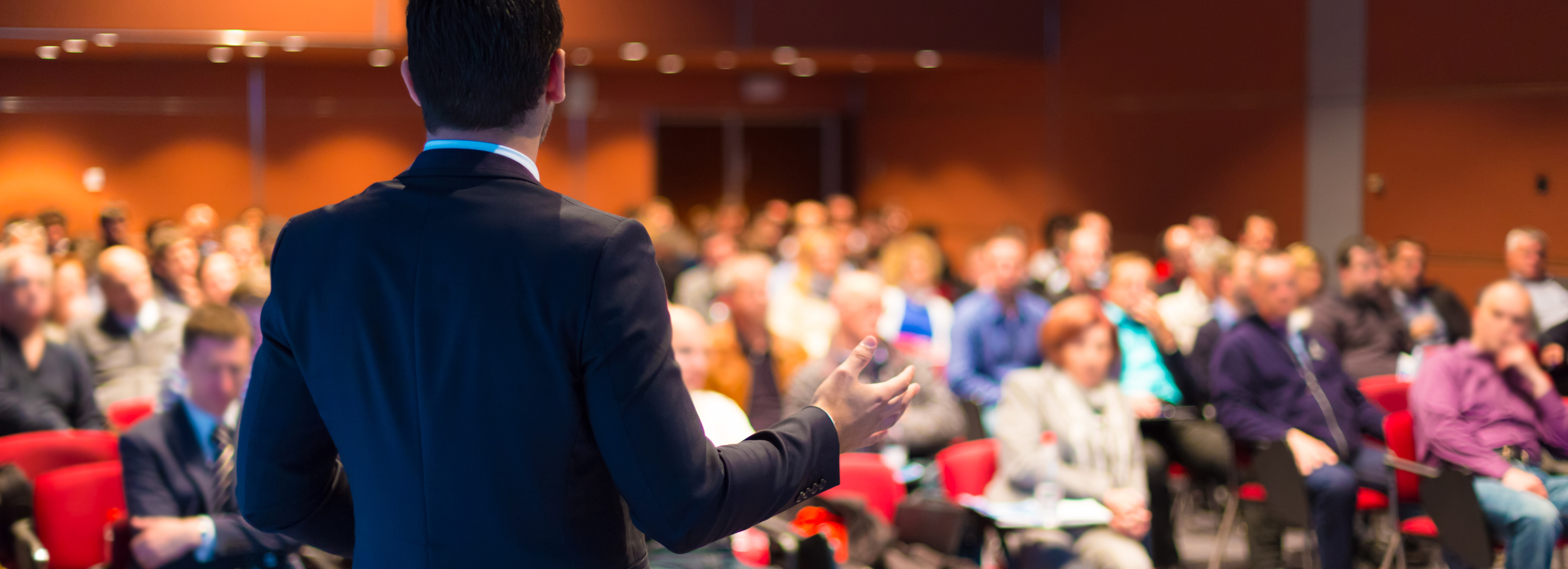
As seen on BigSpeak.com
You take a seat in the audience. The lights go down. The speaker bounds out on stage to a burst of applause. The presentation is smooth, polished, funny—but something is off. You’re not laughing and the material feels stale. This is a big name, New York Times bestselling author. Yet, somehow, you’re not feeling it.
Then it hits you. You’ve seen this exact presentation before on YouTube. The only difference between this keynote and the speech the speaker gave at the last conference you attended is the company name and logo in the Powerpoint deck. If you feel had, imagine how the rest of the audience feels. Wonder what those “smile sheets” will reveal in the post-session surveys?
Don’t panic. There’s a cure for keynote déjà vu: moderated sessions.
This format is great for showcasing big-name celebrities. While your typical celebrity gives a great performance on film—after 14 takes, great lighting, and a bunch of editing—they usually don’t knock it out of the park with a keynote. Part of it is their performance and part of it is your expectations of perfection. BUT…imagine, if you will, a magic potion that makes it all better.
The fireside chat
I have to admit when I first started in the speaker industry, I wasn’t a big fan of the moderated session (also known as the fireside chat). I thought, why do you want to sit in on someone else’s conversation when you can see a speaker bang out three points you need to know to “shift paradigms for a pivotal game changer” (gag!).
But after seeing hundreds of keynotes, I now understand moderated sessions not only liven up a conference, but they can also be more powerful than the classic three-point presentations. Unlike your standard keynote, moderated sessions are customizable, smooth, conversational, and intimate, no matter how large the crowd.
Intimate setting
Take your typical keynote: In the middle of the stage sits a lectern and a huge screen. During the talk, the speaker either stands behind the lectern or paces back and forth across the stage, clicker in hand, gesturing to the screen. There is a clear separation between the role of speaker and audience and, usually, no interaction.
Moderated sessions, on the other hand, have a cozy feel. Instead of a lectern, there are two comfortable chairs facing each other as if the speaker and the moderator were in a living room together. The intimate feel puts the audience at ease, makes the speakers relaxed, and produces a much deeper and personal experience.
Role of the moderator
Another big difference of moderated sessions is the control the moderator has. The moderator can be someone from inside the organization or another expert in the field, as long as he or she has insight into the industry and the speaker.
Having the right moderator changes the dynamic. The best moderator is someone energetic, funny, and quick with the wit. It’s their job to control the pace of the session, to give enough time for answers, and steer the conversation in whatever direction best engages the audience to keep everyone involved. They are a friend, storyteller, and emcee rolled in one.
The key is in the questions
The biggest difference in terms of the audience experience are the questions. In your standard keynote, you get great ideas packed into a short time frame. Questions, if any, come at the Q&A and are usually rushed as the speaker has other obligations.
A moderated session, on the other hand, allows the questioner to unpack those ideas and go much deeper than they would in your standard canned speech. These questions yield details and stories relevant to the audience. The conversational nature also allows for surprise insights or an exclusive story not delivered in a standard session.
The moderator can ask very specific questions about current events, the industry, the company and even how it relates to the exact attendees sitting in the audience. Audiences come away feeling they have learned something relevant and unique.
If you’re interested in moderated sessions, BigSpeak works closely with our speakers to create insightful questions and to coach speakers on giving smooth, conversational answers that will delight and entertain an audience more than the standard keynote.
Ken Sterling is the executive vice president at BigSpeak?, the leading keynote and business speakers bureau. He holds a Ph.D. from the University of California and an MBA from Babson College. Sterling teaches entrepreneurship, marketing, and strategy at UC Santa Barbara. He is a serial entrepreneur, keynote speaker, and hypergrowth sales and marketing expert.
Complete this easy form to be connected with top keynote speaker consultants in the speaking industry. Within 24 hours, an expert event consultant will be in touch with you to locate the best keynote speaker for your event. No pressure, no tactics - just expert advice on how to select the perfect keynote speaker for your upcoming event.